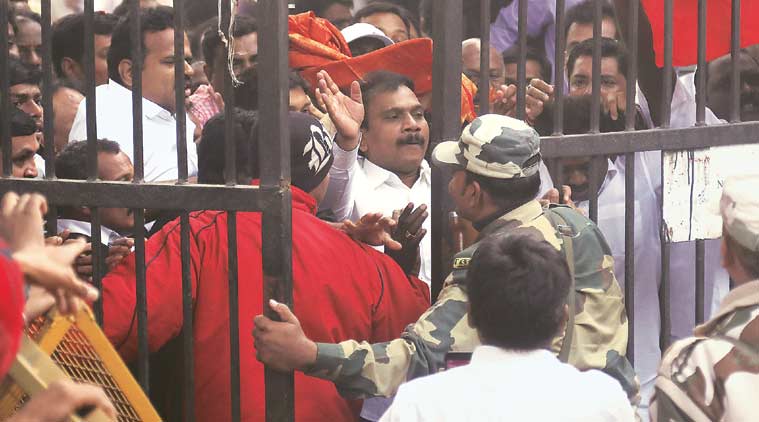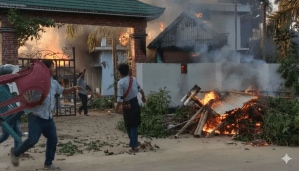The February 2012 Supreme Court judgment, which quashed allocation of spectrum granted by the previous UPA government, was a damning indictment of A Raja, during whose tenure as Telecom Minister the allotments were made.
The bench said that “material produced before the court shows that the Minister of C&IT (Communications and Information Technology) wanted to favour some companies at the cost of the public exchequer…”

The bench of Justices G S Singhvi and A K Ganguly said, “The exercise undertaken by the officers of the DoT (Department of Telecom) between September 2007 and March 2008, under the leadership of then Minister of C&IT, was wholly arbitrary, capricious and contrary to public interest, apart from being violative of the doctrine of equality.”
Read | Decoding the 2G spectrum verdict: Charge by charge, how case collapsed
The court was dealing with a batch of petitions, filed among others by the Centre for Public Interest Litigation and Subramanian Swamy. It concluded that “the manner in which the exercise for grant of LoIs [Letters of Intent] to the applicants was conducted on January 10, 2008 leaves no room for doubt that everything was stage-managed to favour those who were able to know in advance change in the implementation of the first-come-first served principle”.
The bench listed what it said were “steps” taken by Raja to “favour some companies”.
Soon after his appointment in the Union Cabinet, Raja directed that all applications received for grant of United Access Service Licence (UAS) be kept pending until the Telecom Regulatory Authority of India (TRAI) gave its recommendations. However, even after TRAI gave its recommendations on August 28, 2007, this was not placed before the full Telecom Commission, which would have included the Finance Secretary, the court found.
Story continues below this ad
Also Read | The scam that wasn’t : CAG, BJP need to apologise
The TRAI recommendations were first considered by an internal committee of the DoT. The report of this committee was placed before the Telecom Commission on October 10, 2007.
 Former Telecom Minister A Raja outside New Delhi’s Patiala House court after his acquittal in the 2G spectrum case Thursday. (Express Photo: Abhinav Saha)
Former Telecom Minister A Raja outside New Delhi’s Patiala House court after his acquittal in the 2G spectrum case Thursday. (Express Photo: Abhinav Saha)
However, the four non-permanent members of the commission were not even informed about the meeting. These members are the Finance Secretary, and Secretaries of the departments of Industrial Policy and Promotion, Information Technology, and Planning Commission. This meeting, attended only by DoT officials, approved the internal committee’s report.
The apex court observed, “Officers of the DoT who attended the meeting of the Telecom Commission held on October 10, 2007 hardly had any choice but to approve the recommendations made by TRAI. If they had not done so, they would have incurred the wrath of Minister of C&IT.”
Story continues below this ad
On the DoT not discussing the issue with the Finance Ministry, the court said this was because the “minister…was very much conscious of the fact that the Secretary, Finance, had objected to the allocation of 2G spectrum at the rates fixed in 2001…”
RELATED REPORT: Allegations of corruption against UPA were never true, says Chidambaram
The minister, the court said, had “brushed aside the suggestion made by the Minister of Law and Justice for placing the matter before the empowered Group of Ministers”, and also that of the Prime Minister, who, in a letter dated November 2, 2007, said that keeping in view the inadequacy of spectrum, transparency and fairness should be maintained in allocation of spectrum.
Raja, the court noted, rejected the PM’s suggestion “by saying that it will be unfair, discriminatory, arbitrary and capricious to auction the spectrum to new applicants, because it will not give them [a] level playing field.”

Story continues below this ad
The verdict says that Raja “simultaneously” introduced September 25, 2007 the cut-off date for consideration of applications received for grant of licence, even though the DoT had issued a press release a day before, stating that October 1, 2007 was the last date for applications. This “arbitrary action” of the minister, although apparently “innocuous”, was “actually intended to benefit some of the real estate companies who did not have any experience in dealing with telecom services, and who had made applications only on September 24, 2007” —- a day before the cut-off date fixed by Raja “on his own”, the apex court ruled.
READ IN TAMIL HERE
The court said the September 25 cut-off decided by Raja was not made public until January 10, 2008; and the first-come-first-served principle, followed since 2003, was changed at the last moment. “This enabled some applicants, who had access either to the minister or officers of DoT to get bank drafts, etc. prepared towards performance guarantee etc. of about 1600 crores,” the court said.

 A supporter sports an image of Raja and DMK patriarch Karunanidhi, outside Patiala House courts on Thursday. (Express Photo: Abhinav Saha)
A supporter sports an image of Raja and DMK patriarch Karunanidhi, outside Patiala House courts on Thursday. (Express Photo: Abhinav Saha)
 Former Telecom Minister A Raja outside New Delhi’s Patiala House court after his acquittal in the 2G spectrum case Thursday. (Express Photo: Abhinav Saha)
Former Telecom Minister A Raja outside New Delhi’s Patiala House court after his acquittal in the 2G spectrum case Thursday. (Express Photo: Abhinav Saha)






